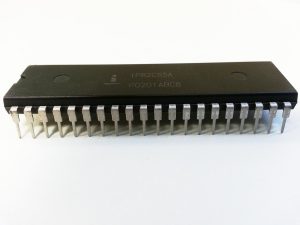Photonic Integration: Light-Based Circuit Boards
In the world of technology, there’s a constant demand for faster and more efficient devices. As our reliance on technology grows, so does the need for better and faster ways to transfer data. That’s where photonic integration comes in. This revolutionary technology uses light to transmit and process data, paving the way for the next generation of advanced electronics. In this article, we will explore the cutting-edge concept of photonic integration and how it is transforming the way we view circuit boards.
Understanding Photonic Integration:
Photonic integration is the merging of photonics and electronics, where light and electronic signals are combined to create more efficient and effective electronic components. Just like how electronic circuits are made up of transistors, photonic circuits are made up of photonic devices such as lasers, modulators, and detectors. However, instead of using electrons to transmit and process data, photonic circuits use photons, which are packets of light energy. This allows for much faster data transfer rates with less energy consumption.
The Advantages of Photonic Integration:
The use of photonic integration in circuit boards holds a host of advantages over traditional electronic circuitry. Firstly, as mentioned earlier, photonic circuits are much faster than their electronic counterparts. While electronic circuits rely on the movement of electrons, which is limited by the material and size of the components, photonic circuits use light, which travels at the speed of light and is not hindered by materials or size. This results in significantly higher data transfer rates.
Another major advantage of photonic integration is its energy efficiency. Traditional electronic circuits consume a large amount of energy, which can be a major hindrance when it comes to compact and portable devices. Photonic circuits, on the other hand, use light to transmit and process data, which requires significantly less energy and reduces the overall power consumption of the device.
Applications of Photonic Integration:
The applications of photonic integration are vast and diverse. One of the most promising areas is in data communication. With the increasing demand for faster internet speeds and large data transfers, the use of photonic integrated circuits can revolutionize the way we connect and transfer information. The use of photonic integration in data centers can significantly increase their processing speeds and reduce energy consumption, making them more efficient and cost-effective.
Moreover, photonic integration is also being explored in the field of healthcare, where it can be used for optical imaging, biosensors, and medical diagnostics. The use of light-based circuit boards in these applications can lead to faster and more accurate results, improving the overall healthcare industry.
The Future of Photonic Integration:
The constantly evolving landscape of technology demands continuous innovation and improvement. As the demand for faster, more efficient devices increases, the use of photonic integration will become more prevalent in various industries. Researchers and engineers are continuously exploring ways to improve and integrate photonic components into existing electronic circuits, creating hybrid systems that combine the best of both worlds.
The continued development of photonic integration will lead to advancements in other areas such as artificial intelligence, quantum computing, and virtual reality, making our devices smaller, faster, and more powerful than ever before.
Conclusion:
In conclusion, photonic integration is a game-changing technology that has the potential to revolutionize the way we transfer and process data. The use of light-based circuit boards not only improves efficiency and speed but also opens doors for countless applications in various industries. As we continue to push the boundaries of technology, the integration of photonic components will undoubtedly play an integral part in shaping the future of electronics.











